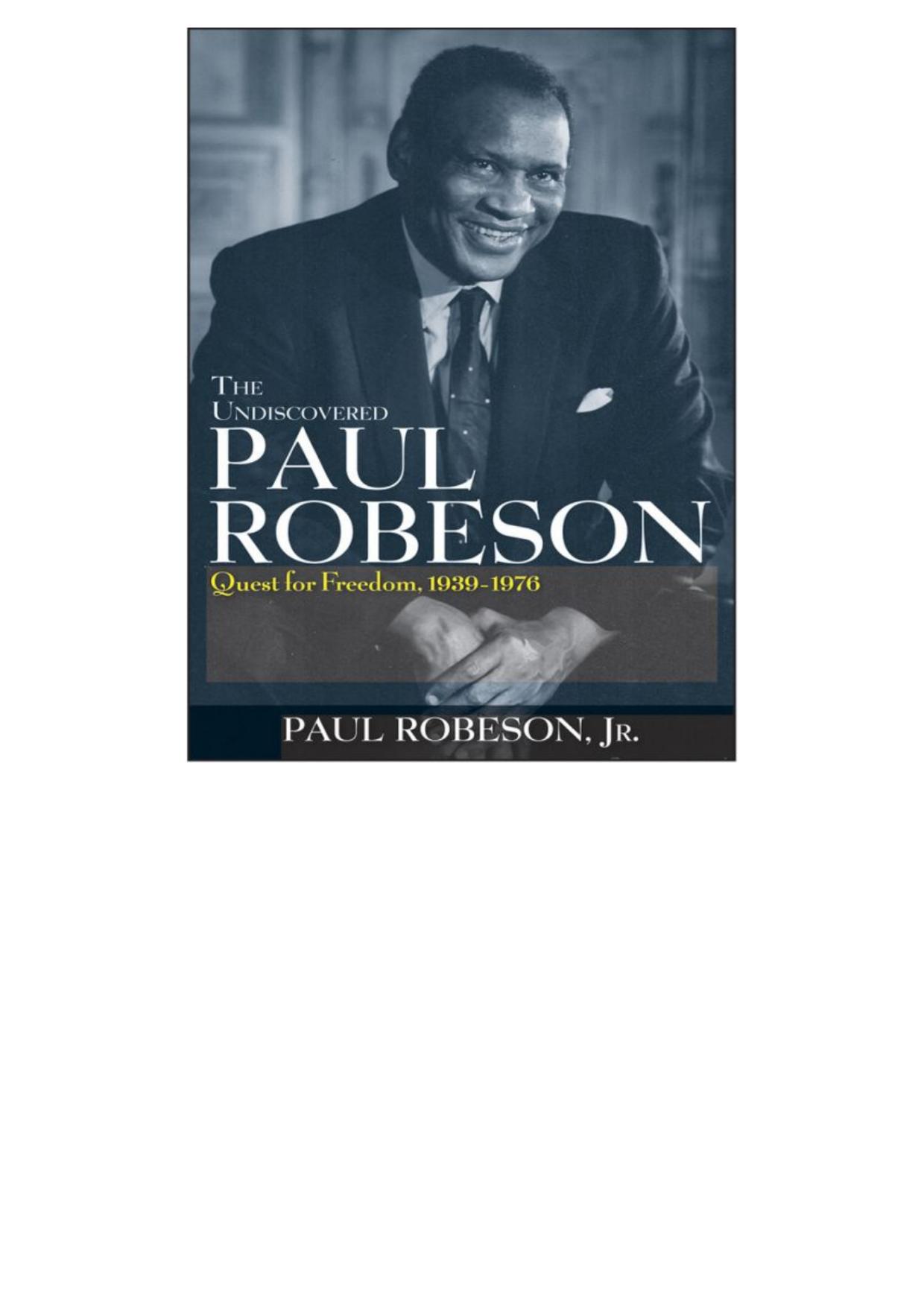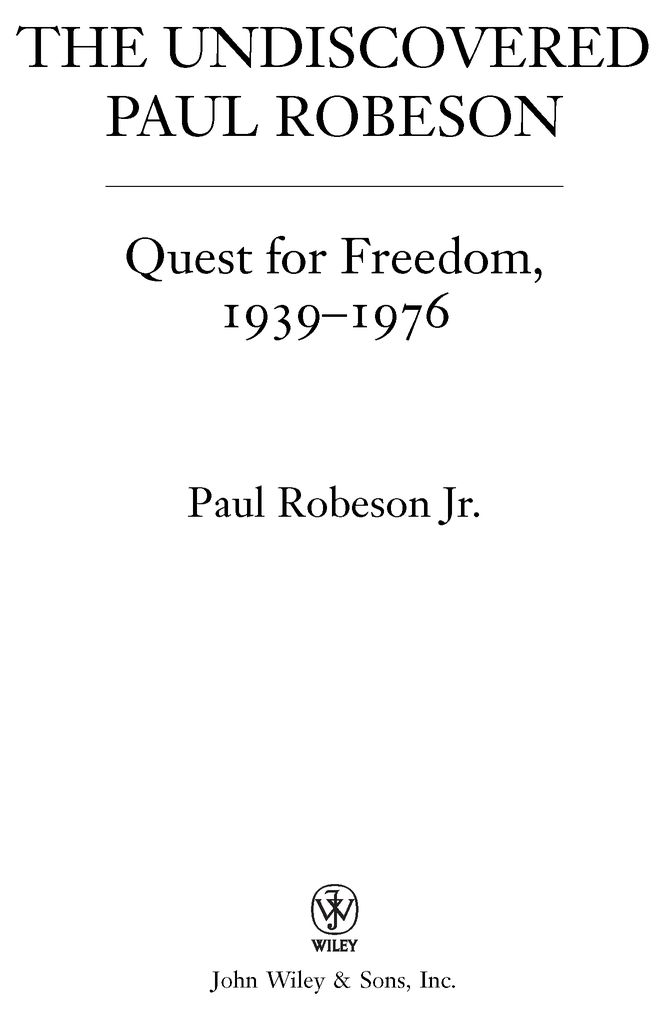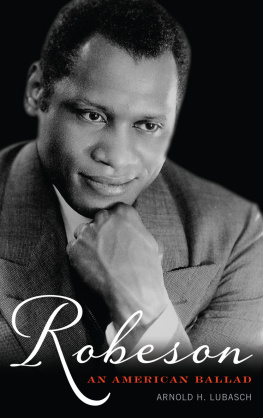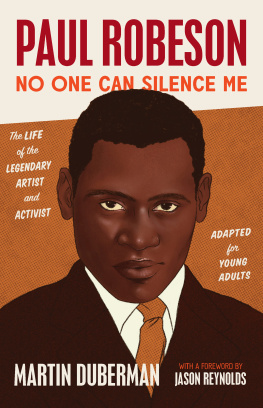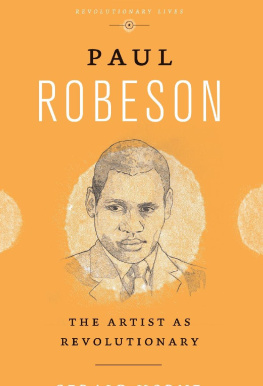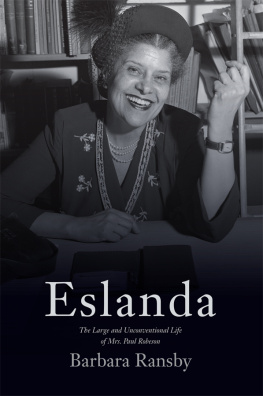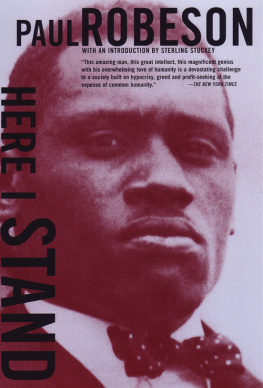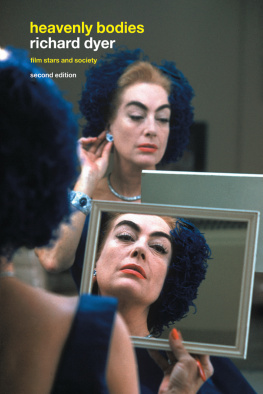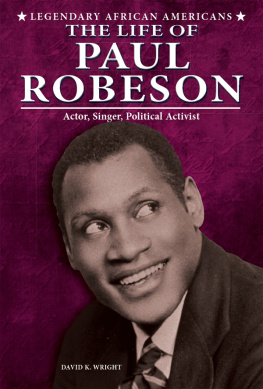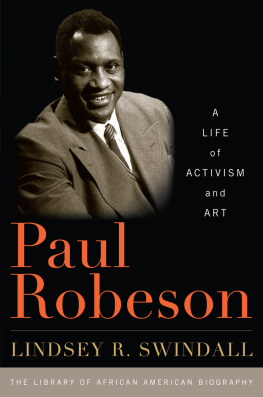Table of Contents
This book is printed on acid-free paper.

Copyright 2010 by Paul Robeson Jr. All rights reserved
Published by John Wiley & Sons, Inc., Hoboken, New Jersey
Published simultaneously in Canada
No part of this publication may be reproduced, stored in a retrieval system, or transmitted in any form or by any means, electronic, mechanical, photocopying, recording, scanning, or otherwise, except as permitted under Section 107 or 108 of the 1976 United States Copyright Act, without either the prior written permission of the Publisher, or authorization through payment of the appropriate per-copy fee to the Copyright Clearance Center, 222 Rosewood Drive, Danvers, MA 01923, (978) 750-8400, fax (978) 646-8600, or on the web at www.copyright.com. Requests to the Publisher for permission should be addressed to the Permissions Department, John Wiley & Sons, Inc., 111 River Street, Hoboken, NJ 07030, (201) 748-6011, fax (201) 748-6008, or online at http://www.wiley.com/go/permissions.
Limit of Liability/Disclaimer of Warranty: While the publisher and the author have used their best efforts in preparing this book, they make no representations or warranties with respect to the accuracy or completeness of the contents of this book and specifically disclaim any implied warranties of merchantability or fitness for a particular purpose. No warranty may be created or extended by sales representatives or written sales materials. The advice and strategies contained herein may not be suitable for your situation. You should consult with a professional where appropriate. Neither the publisher nor the author shall be liable for any loss of profit or any other commercial damages, including but not limited to special, incidental, consequential, or other damages.
For general information about our other products and services, please contact our Customer Care Department within the United States at (800) 762-2974, outside the United States at (317) 572-3993 or fax (317) 572-4002.
Wiley also publishes its books in a variety of electronic formats. Some content that appears in print may not be available in electronic books. For more information about Wiley products, visit our web site at www.wiley.com.
eISBN : 978-0-470-56968-9
To my late son, David, who possessed vision beyond
his years, gave of himself to many, and bore burdens
which were too heavy.
To my daughter, Susan, who deeply understands
my fathers spirit.
To my wife, Marilyn, whose dedicated and loving support
made it possible for me to finish this book.
The artist must take sides. He must elect to fight for freedom or slavery. I have made my choice. I had no alternative.
PAUL ROBESON, 1937
PREFACE
I AM LOOKING FOR FREEDOM
In this second volume of The Undiscovered Paul Robeson, which covers the years from 1939 until my fathers death in 1976, I have drawn heavily upon the vast collection of family papers, photographs, clippings, and phonograph records that my mother, Eslanda, gathered and preserved over more than four decades. These materials make up the Paul and Eslanda Robeson Collections and are deposited at Howard Universitys Moorland-Spingarn Research Center in Washington, D.C. However, my personal insights and my feel for the historical context of the latter part of Paul Robesons story derive primarily from the direct experiences I shared with him over thirty - six years.
My relationship with my father broadened and deepened as I matured and he gradually shared more aspects of his life with me. Like him, I loved music, sports, chess, the Russian language, and reading. He went to considerable lengths to stimulate those interests of mine, and especially to help me develop a growing intellectual curiosity. He was a thinker and a teacher at heart, and derived great pleasure from mind games with ever-changing rules. I found such encounters fascinating and rewarding, because from them I learned as much about his way of thinking as I did about the subjects he illuminated for me.
During my college years, he introduced me to his closest circle of friends, took me along to his rehearsals and performances. We had long conversations about politics, culture, race, and ideology. When I was twenty-one, he accepted me into his inner council of advisers, and I worked closely with him in several different capacities during the next twenty-five years.
While it is true that a sons perspective is inevitably personal, mine is also closely informed by my fathers words and eyewitness accounts of his life and times.
In this volume, I tell the dual story of my fathers rise to the pinnacle of success and his determined use of this stature to advance the struggle of his people for full U.S. citizenship. By the mid-1940s, he symbolized the best in America and his name was a household word to millions. He had become a superstar, referred to as Americas Number One Negro.
Pauls impact as an artist and spokesperson aroused the opposition of the U.S. government and compelled him to face critical personal, political, and artistic choices. This is the story of the choices he made and their consequences.
My first volume of The Undiscovered Paul Robeson, which covered the years 1898-1939, explored the path Paul Robeson traversed as a child of destinyfrom motherless child to scholar and athlete, to titan of the theater, concert stage, and film, and then to leading spokesperson for the causes of antiracism, antifascism, and anticolonialism. The vast arc of development encompassed by those forty-one years was anchored to his value systemthe cultural traditions of southern field slaves that had been transmitted to him by his father, an escaped field slave who became a minister.
Against the backdrop of the emerging Harlem Renaissance, he established the foundation of his subsequent career. He became an honor student and All-America football star at Rutgers College and financed his studies at Columbia Law School by playing professional football. In 1921, he married Eslanda Cardozo Goode, a Columbia University graduate student two years his senior from a prominent black Washington, D.C., family. Then, with Eslandas encouragement and support, he redirected his talents to the performing arts. Six years later, he was being hailed as Americas foremost black actor, a leading recording artist, and a bright new singing star of the concert stage.
To escape the stifling racial environment in the United States, Paul departed to London in 1927 and chose to live there for twelve years, returning home only for concert tours, to make films, and to perform in the theater. In London he found a far more diverse world than the one he had lived in at home. He studied African cultures at London University and met leaders of the anticolonial freedom movements throughout Africa and Asia. His search for folk songs of many lands launched him into the continuous study of a variety of languages, including two African languages, German, Italian, French, Spanish, and especially Russian.
From 1930 through 1932, Paul took the time to reflect upon the personal and public aspects of his burgeoning career. The more he reflected, the more clearly he understood that he had to make some basic personal decisions. He chafed under what he viewed as Eslandas excessive control of all aspects of his artistic career, whereas Eslanda felt she had earned the right to an unlimited partnership. She wanted a closed marriage in which she could count on his fidelity, but he insisted that she agree to a discreetly open one. After a stormy two-year separation, Paul ended his vacillation. He resolved to reconcile permanently with Eslanda despite their differences. The skein of their complex relationship remains a central aspect of my narrative in this volume.

